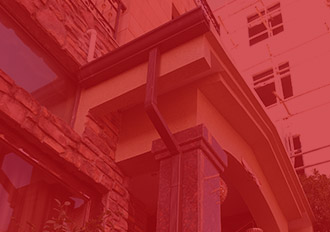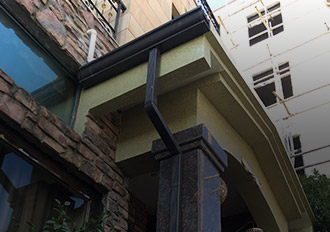THE LATEST IN ROOFING
When selecting a roofing material, homeowners often prioritize aesthetics and durability. But what if your roof could also slash energy bills, reduce street noise, and create a more comfortable living environment? Stone-coated Roman tile roofs—a fusion of classic elegance and modern engineering—deliver precisely these hidden advantages. Beyond their Mediterranean charm, these roofs leverage sophisticated physics to outperform conventional materials in thermal insulation and soundproofing. Let’s explore the science-backed benefits redefining "smart" roofing.
Stone-coated Roman tiles typically feature a steel core topped with volcanic stone granules and an acrylic glaze. This layered design isn’t just for looks.
Steel substrate: Reflects radiant heat like a mirror, leveraging the reflective insulation principle seen in materials such as aluminum foil (reflectivity up to 0.95).
Stone granules: Create air-trapping micro-pores, mimicking "porous-type" insulation that slows conductive heat transfer.
Interlocking seams: Eliminate thermal bridging (heat leaks) while blocking soundwave pathways.
Unlike traditional asphalt shingles or clay tiles, this combination actively battles heat ingress and airborne noise.
1. Reflective Power
The steel base acts as a radiant barrier, reflecting up to 90% of solar infrared radiation—critical for blocking attic heat buildup. This is especially potent in hot climates where roofs absorb relentless sun exposure3.
2. Conductive Resistance
The stone layer’s porous structure traps air, creating millions of micro-insulation chambers. Since air has ultra-low thermal conductivity , heat struggles to penetrate. This aligns with the "porous-type" insulation mechanism, where small, closed-cell pores maximize resistance.
3. Key Thermal Metrics
Stone-coated tiles typically achieve:
Thermal emittance >0.85 (releases absorbed heat efficiently).
Solar reflectance >0.30 (exceeds ENERGY STAR standards for cool roofs).
Effective attic temperature reduction of 20–40°F versus dark asphalt shingles.
Real-world impact:In one local study, summer air conditioning costs for homes with stone-coated metal roofs dropped by 15-25% due to reduced heat transfer into the attic.
Noise from rain, hail, or urban traffic can disrupt home tranquility. Stone-coated Roman tiles excel here through two mechanisms:
1. Mass and Damping
The steel core’s density (typically 4–6x heavier than asphalt shingles per unit) blocks external soundwaves, while the stone layer disrupts vibrations. This creates a mass-spring effect, dissipating energy before it enters the home.
2. Impact Noise Reduction
During rainstorms, the stone granules absorb and scatter sound energy, preventing the "drumming" effect common with bare metal roofs. Tests have shown that the noise reduction is comparable to that of specialized acoustic panels.
Case study: A Los Angeles residence near a freeway reported indoor noise reduction by 70% after replacing terracotta tiles with stone-coated Roman tiles.
The thermal benefits cascade into broader advantages.
Lower HVAC loads: Reduced heat gain in summer and heat loss in winter cut energy use year-round.
Extended roof longevity: Reflective surfaces prevent UV-driven degradation, aiding warranties of 50+ years.
Condensation control: Properly installed systems include ventilation barriers, preventing mold-inducing moisture buildup—a critical weakness in fiber-based insulation.
Not all stone-coated tiles are equal. Prioritize:
High-granule density: More stones = better air entrapment for thermal/sound blocking.
Ventilated batten systems: Air gaps between tiles and underlayment enhance thermal buoyancy (heat escape).
Class A fire rating: Metal substrates non-combustible—unlike organics in asphalt shingles.
Stone-coated Roman tile roofs transcend aesthetics. By harmonizing reflective technology, porous insulation, and acoustic mass, they create homes that are quieter, cooler, and cheaper to run. For climates with extreme sun, noise pollution, or energy costs, this roofing isn’t just beautiful—it’s a long-term performance powerhouse.



REQUEST A QUOTE
Copyright © Hangzhou Singer Building Materials Co., Ltd. All Rights Reserved |
Sitemap
| Powered by 
SEOKeywords:Roof Tile ManufacturerRoof Shingle ManufacturerAsphalt Shingle SupplierRain Gutter CompanyShingle Roofing CompanyWaterproof Tape For RoofPressed Steel Roofing TilesRain Gutter SystemGray Asphalt ShingleStone Coated Metal Roofing Manufacturer